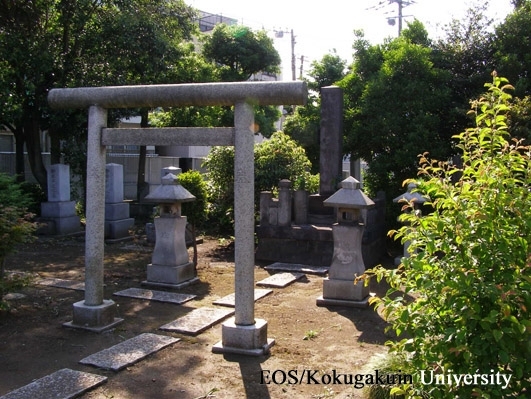- トップ
- Encyclopedia of Shinto
- Nitta Kuniteru
Encyclopedia of Shinto
| Main Menu: | |
| Links: |
詳細表示 (Complete Article)
| カテゴリー1: | 8. Schools, Groups, and Personalities |
|---|---|
| カテゴリー2: | Personalities |
| Title | Nitta Kuniteru |
| Text | (1829-192) Founder of the Shinto sect Shintō Shūseiha. His original name was Takezawa Kenzaburō. Born on the fifth day of the second month of 1829 in Tokushima Domain of Awa Province (present-day Tokushima Prefecture), Nitta was third son of samurai father Takezawa Hishiyō and mother Some. Tradition states that he read the Confucian Analects by the time he was seven. At the age of nine, he studied texts transmitted as part of his traditional family lore, and through them came to learn of his ancestor Nitta Yoshisuke, thus developing a strong sense of loyalty to the imperial house. In his youth Nitta traveled through the San'in and Sanyō regions of western Japan, where he corresponded with samurai who shared his convictions. In 1848, at the age of twenty, Nitta became convicted that "Japan is a sacred nation, and the Japanese people the descendents of the deities (waga kuni wa shinkoku tari, tami wa shinson tari)," and based on this, he resolved to foster Shinto and edify the people. That year marked the founding of his group Shūseiha. From that time, Nitta gravitated toward teachings that represented a combination of Shinto and Confucianism. In the late Edo period he made proposals to the Tokugawa government (bakufu) in support of anti-foreign sonnō jōi (Revere the Emperor, Expel the Barbarian) sentiment, but before long cut ties with bakufu supporters and became involved with the movement for the restoration of imperial rule, known as ōsei fukkō. In 1868, Nitta was sent on a policing mission to Hida Province (present-day Gifu Prefecture), but he was the target of slander and temporarily sentenced to confinement in Oshi Domain (present-day Saitama Prefecture). From that experience, he distanced himself from politics to focus on religious activities. When the Office of Preceptors (Kyōdōshoku) was established in 1872, Nitta immediately became registered as a preceptor in the program. The following year he gathered disciples who had followed him in the final years of the Edo period and founded the Shinto confraternal organization Shūsei Kōsha. This organization received official recognition in 1876 as the independent sect Shintō Shūseiha, and Nitta was appointed its first Superintendent (kanchō). After this he worked to promulgate his teachings and increase sect membership, and in 1891 was conferred the Junior Fifth court rank. He died in 1902 in the Hongō district of Tokyo, at the age of seventy-four. Nitta was the author of Kyōdō daii (Great Importance of the Way of the Teachings), Kaitensaku yōgyōroku (Record of Strategies Required to Save the Nation), and Gunbi shōryaku (A Short Treatise on the Military Preparedness of the Bakufu), among other works. —Inoue Nobutaka |




